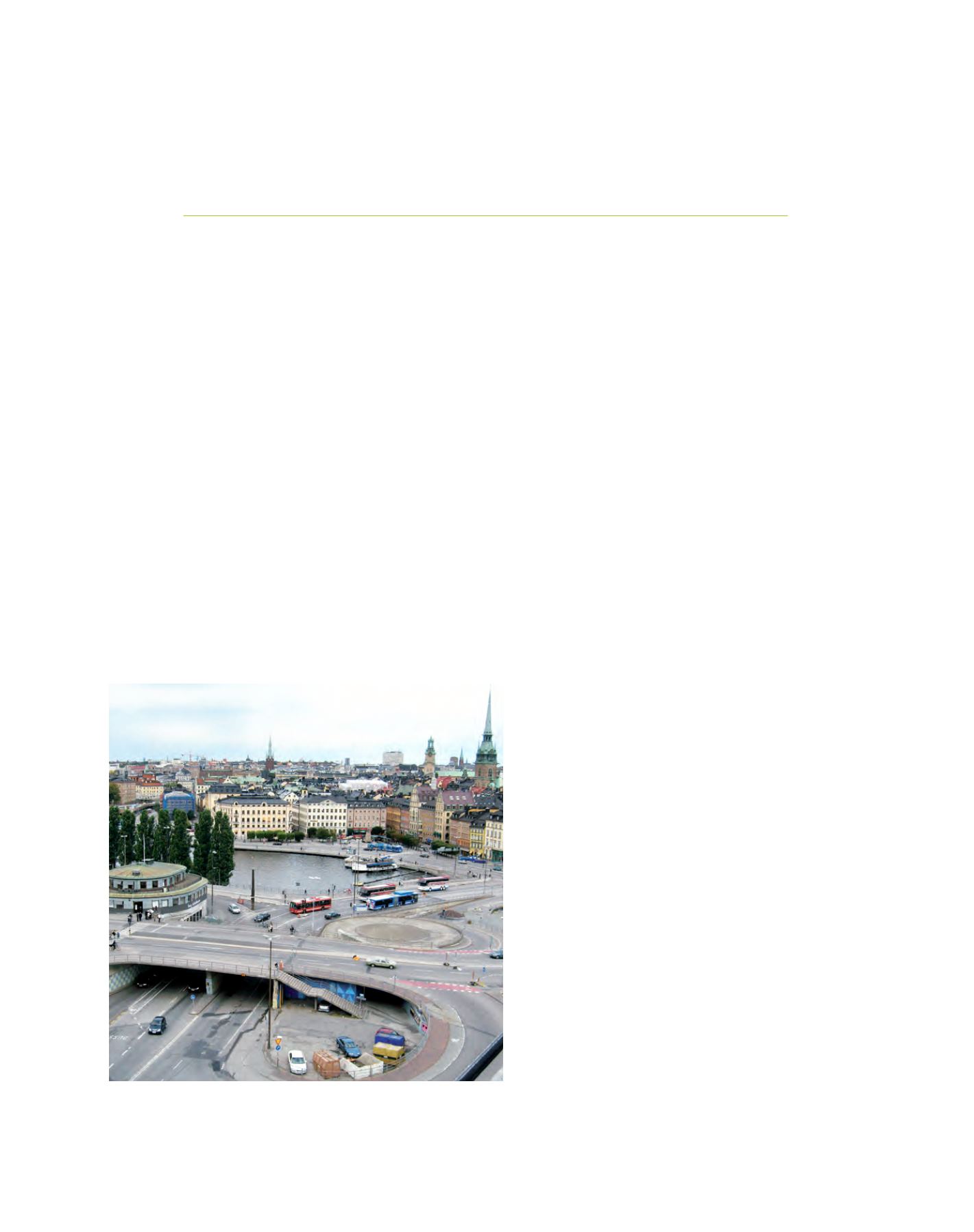

[
] 220
Climate data and information for a
multi-sectorial vulnerability analysis
Markku Rummukainen and Lars Bärring, Swedish Meteorological and Hydrological Institute
M
odern society is sensitive to weather and climate
events. This is very much evident in the developing
regions of the world, but is equally the case in indus-
trialized countries as well.
Society should be familiar with handling climate variability, but this
does not always appear to be the case – as is evident in the aftermath
of an extreme event such as a strong storm, hurricane or typhoon, or
a major heat wave, flooding or drought episode. When assessing the
damage, questions on what could have been done to prevent or miti-
gate the impact are inevitably raised. Often, the answers reveal that a
number of measures could have been taken to decrease vulnerability
to and, by extension, the impacts of such extreme events.
One reason for such ‘forgetfulness’ is the intermittent character of
extreme events. A long time might elapse from one extreme event
to the next, during which time society changes, our perceptions
evolve and the collective memory of an extreme event fades away.
However, there are ways of systematically factoring in the risk of
extreme events to decision processes, whether we have
a fresh experience reminding us, or not.
Today, the prospect of growing climate change adds
to the need of addressing vulnerability, not least in order
to guide decisions aimed at reducing exposure to climate
variability and at enabling informed climate adaptation.
This article describes recent activities in Sweden
involving climate data support for multi-sectorial
societal vulnerability analyses, designed to improve
knowledge on climate adaptation needs, as well as
provide recommendations for policy and practical
measures. In particular, this article explores the scien-
tific basis of the activities of the Swedish Commission
of Climate and Vulnerability between 2005 and 2007.
The Swedish Commission of Climate and
Vulnerability
The Commission of Climate and Vulnerability was
established by the Swedish Government in 2005. It was
tasked to provide a broad assessment of the vulnerabil-
ity of Swedish society to extreme weather and water
events, and climate change. In addition to studying
hydrometeorological conditions, the commission maps
possible regional and local impacts, calculates related
costs and benefits, and proposes measures to deal with
such events. The measures proposed include: technical
solutions, legislation changes, insurance frameworks,
research needs and adapted organizational arrange-
ments at national, regional and local levels. The
Commission reported in two stages, the first analy-
sis focussed specifically on conditions around two of
the large lakes of Sweden – Vänern in the west and
the Hjälmaren-Mälaren system in the east. The final
analysis covered a multitude of sectors: communica-
tions, technical support systems, developments and
buildings, rural businesses and tourism, the natural
environment and environment goals and human health.
Furthermore, some socioeconomic analyses and consid-
erations of global influences were made.
As a basis for the Commission’s analyses, scientific
input in the form of a collection of regional climate
scenarios, supported by tailored analyses, was solic-
ited and subsequently provided. Importantly, these
provisions were made during an extensive researcher/
stakeholder dialogue. The latter came from authori-
ties, county and municipal administrations, trade and
R
isk
G
overnance
and
M
anagement
The Slussen region in central Stockholm. Water channels are a crucial element of
Stockholm’s infrastructure. They channel water out to sea, preventing flooding, and
stop saltwater from intruding the freshwater systems upstream
Image: Sten Bergström, SMHI
















